
Review on Cisco-Linksys BEFW11S4 Wireless-B Cable/DSL Router: Stable and Fast Internet Connectivity by John Chembola

Thank god it's done. Read below how
I just bought a Linksys router (v2) with a WPC11 (v3) card last week and I'm happy to share it with you that both work exceptionally well, especially since I live in New York. A lot of bad reviews have been posted about this group of products, and maybe some of them are fair, but most of them are backlash to previous versions of each component working (or not working) together. Linksys seems to come from the belief that it's better to release a product with a few flaws than to release it in perfect condition (and therefore with a significant time-to-market delay), and I respect that reasoning (think how many service packs you've dealt with one of your Windows operating systems over the years!) The following is my experience with this family of products. Your experience will likely be different if you have a different operating system, have a lot of 2.4GHz phones in your house, your house is mostly steel, etc. But we'll get to that. In order to enter the wonderful world of wireless networking, you need to brush up on the good, the bad, and the ugly aspects of 802.11. A good resource is 80211-Planet. There are several articles on this site (search for "Jim Geyer" or "minimizing 802.11 interference problems") that explain why you might expect interference depending on your location and conditions around your router or NIC. Conclusion = There are many variables that can affect the performance of any 802.11 product, but you won't know until you dive in and try it. INSTALLATION: I am using a Thinkpad T21 laptop with W2K and RoadRunner for the cable. Modem maintenance (Toshiba modem). I opened the Linksys router's box, scanned the lengthy booklet, and then carefully followed each step of the one-page quick installation guide. The router connects to the cable modem with no problems (note that the RoadRunner uses DHCP. What is DHCP, you ask? Go to Webopedia and search on DHCP for details). Please note that I used all default settings. Time to connect cable modem to router and router to laptop = 11 minutes. Then I opened the NIC box and again followed the instructions in the quick start guide that came with the card, line by line. I went back to all the default settings and lo and behold, the card started communicating with the router with no problems. Time to connect the card to the laptop and the now 'connected' laptop to the router = 7 minutes (including software installation). FEATURES: I live in a duplex in Lower Manhattan so I was skeptical at first based on reviews I read earlier about performance regarding distance to router etc. However, I can move anywhere on any floor and get a consistently good signal, and I write this below while streaming music. no). lags behind). So far I've downloaded hundreds of MBs of data, streamed music and videos, sent emails, surfed the web, downloaded files, etc. with no problems. I plugged another wired computer into the router and it connected with no problems (do it again Make sure you are familiar with DHCP, it makes things a lot easier). When I went outside, the signal dropped to a whisper, but I'm not entirely surprised considering the router was three stories up and trying to communicate through multiple walls of brick, wood, and steel. I'll probably play with the router's position indoors to see if I can increase my response outside. I haven't tried the multiplayer yet, but then again I don't use a laptop for this purpose. I also haven't tried updating the card's firmware yet (as she often suggests) as it works now. Instead, I emailed Linksys asking for their recommendation and will post an update to this review once I have a response. RECOMMENDATIONS: If you're ready for the wireless world, the Linksys suite of products works very well, especially now. that they (and Revain) always release the latest version. Some useful tips: Do not install the router near a 2.4 GHz phone or a microwave oven. The key factors are the placement and positioning of the router and antenna. Just like Rome wasn't built in a day, it may take some adjustments to keep your wireless network running smoothly. If you experience unbearable interference, change the channel. As with your portable phone, you may be able to see a significant improvement. Make sure you have an extra CAT5 cable for installation. You need one to connect your DSL/Cable modem to your router and another to connect your router to your computer for the first time. If you don't know what a configuration is, don't mess with it. A classic way to burn your fingers on a hot stove of curiosity. - READ THE INSTRUCTIONS! If you slowly but surely follow each step in the short-term, you can greatly reduce your headaches in the long-term. If you've done your research, you should already know that no single 802.11 product is a panacea for every possible wireless situation. Given the variables at play, it might not work for your home or office. But like intrepid explorers discovering a new world, you too can find happiness and new freedom in wireless connectivity.
- provides roaming, better access point selection, load balancing and network traffic filtering
- Some issues
New products
Comments (0)
Top products in 📶 Wifi Routers
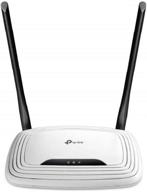
📶 Boost Your Wi-Fi Signal with TP-Link N300 Wireless Extender and Router - 2 High Power Antennas, Access Point, WISP, 300Mbps

216 Review
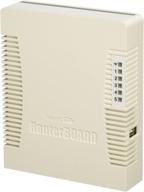
Gigabit Wireless AP RB951G-2HND 💻 Mikrotik with 1000mW Power and 5 Ports

124 Review
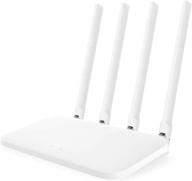
Experience Faster and More Stable Internet with Xiaomi Mi Router 4C

103 Review
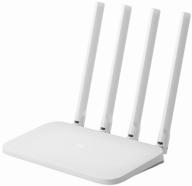
Wi-Fi router Xiaomi Mi Wi-Fi Router 4A Gigabit Edition Global, white

165 Review
Another interesting products
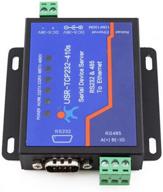
🔌 USR-TCP232-410s: RS232/RS485 Serial to Ethernet Adapter/IP Device Server with DHCP/DNS Support

4 Review
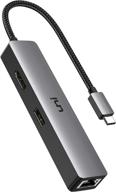
🔌 uni USB C Hub with Ethernet Adapter, 4K HDMI, Gigabit Ethernet, and 3 USB 3.0 Ports for MacBook Pro, iPad Pro, XPS

11 Review
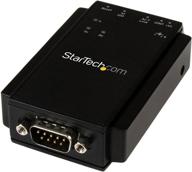
🔌 StarTech.com NETRS232 Serial to IP Ethernet Device Server - DIN Rail Mountable - Serial Device Server - Serial Over IP Device Server (Black)

4 Review
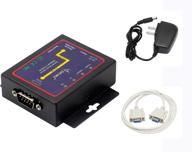
🔌 CERRXIAN RS232 to Ethernet Serial Device Server - TCP/IP Converter with 1Port DB9 RS232 Serial to Ethernet Connectivity

3 Review

